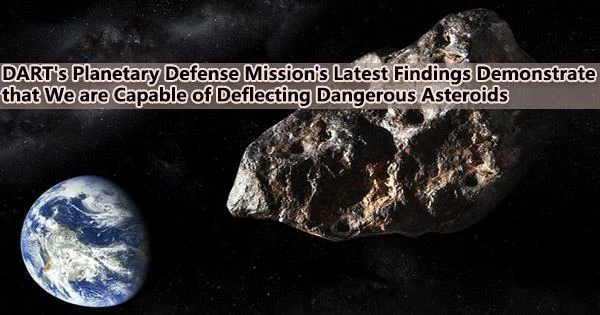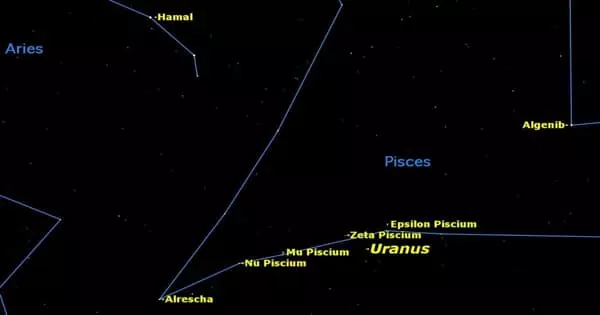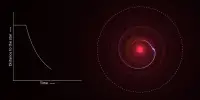What would we do if we discovered a dangerous asteroid headed straight for Earth? Could we deflect it safely to prevent the impact?
In an effort to determine whether a “kinetic impactor” might accomplish the task, NASA’s Double Asteroid Redirection Test (DART) mission attempted to smash a 600 kg spacecraft the size of a refrigerator into an asteroid the size of an Aussie Rules football field last year.
This first real-world test of our possible planetary defense technologies yielded encouraging preliminary results. The first scientific findings, however, have just recently been published. Five papers in Nature have reproduced the hit and examined how it altered the asteroid’s velocity and orbit, while two investigations look at the debris the impact left behind.
The conclusion: “kinetic impactor technology is a viable technique to potentially defend Earth if necessary.”
Small asteroids could be dangerous, but hard to spot
Our solar system is full of debris, left over from the early days of planet formation. Today, some 31,360 asteroids are known to loiter around Earth’s neighborhood.
Even though we keep an eye on the most of the large, kilometer-sized ones that, if they hit Earth, would obliterate mankind, the majority of the smaller ones go undetected.
Above Chelyabinsk, Russia, an 18-meter asteroid erupted in our atmosphere just over ten years ago. A total of 1,500 individuals were hurt and thousands of windows were broken by the shockwave.
Even if a 150-meter asteroid like Dimorphos wouldn’t completely destroy civilisation, it might result in widespread destruction and regional devastation. However, these smaller space rocks are harder to find: we think we have only spotted around 40% of them so far.
The DART mission
Suppose we did spy an asteroid of this scale on a collision course with Earth. Could we nudge it in a different direction, steering it away from disaster?
It is theoretically feasible to strike an asteroid hard enough to alter its orbit, but is this truly doable? That’s what the DART mission set out to determine.
Specifically, it tested the “kinetic impactor” technique, which is a fancy way of saying “hitting the asteroid with a fast-moving object.”
The asteroid Dimorphos was a perfect target. It was in an orbit that took just under 12 hours to complete around its larger cousin, Didymos.
It was intended that the DART spacecraft’s impact would slightly alter this orbit, slowing it down just enough to cause the loop to close, cutting the round trip time by about seven minutes.
A self-steering spacecraft
For DART to show the kinetic impactor technique is a possible tool for planetary defense, it needed to demonstrate two things:
- that its navigation system could autonomously maneuver and target an asteroid during a high-speed encounter
- that such an impact could change the asteroid’s orbit.
In the words of Cristina Thomas of Northern Arizona University and colleagues, who analyzed the changes to Dimorphos’ orbit as a result of the impact, “DART has successfully done both.”
Small-body Maneuvering Autonomous Real Time Navigation (SMART Nav), a new technique that employed the onboard camera to position the DART spacecraft for maximum impact, guided the probe into the path of Dimorphos.
Future missions might be able to select their own landing locations on far-off asteroids where we can’t see the terrain’s rubble piles well from Earth thanks to more sophisticated versions of this technique. This would save the trouble of a scouting trip first!
Dimorphos itself was one such asteroid before DART. A team led by Terik Daly of Johns Hopkins University to create a precise form model used high-resolution photos from the mission. This provides a more accurate estimate of its mass, which advances our knowledge of how these particular asteroids will respond to collisions.
Dangerous debris
The impact itself produced an incredible plume of material. Jian-Yang Li of the Planetary Science Institute and colleagues have described in detail how the ejected material was kicked up by the impact and streamed out into a 1,500km tail of debris that could be seen for almost a month.
Streams of material from comets are well known and documented. They primarily consist of dust and ice and, if they happen to collide with Earth, are thought to be harmless meteor showers.
Asteroids could represent a greater threat to us if we come into contact with them since they are formed of rockier, more durable material. It is really thrilling to document an actual instance of the emergence and development of debris trails in the wake of an asteroid.
One of the main goals of planetary defense initiatives, such as the Desert Fireball Network that we run out of Curtin University, is to identify and keep an eye on such asteroid streams.
A bigger than expected result
So how much did the impact change Dimorphous’ orbit? By much more than the expected amount. Rather than changing by seven minutes, it had become 33 minutes shorter!
This larger-than-expected result shows the change in Dimorphos’ orbit was not just from the impact of the DART spacecraft. The larger part of the change was due to a recoil effect from all the ejected material flying off into space, which Ariel Graykowski of the SETI Institute and colleagues estimated as between 0.3% and 0.5% of the asteroid’s total mass.
A first success
The success of NASA’s DART mission is the first demonstration of our ability to protect Earth from the threat of hazardous asteroids.
To apply this kinetic impactor technique at this time, we still require a significant amount of notice. The earlier we can alter an asteroid’s orbit, the less of a shift is required to keep it from colliding with Earth.
But should we? If we ever have to divert a potentially dangerous asteroid, we’ll need to find a solution to this question. We would need to be careful not to push the orbit in a direction that would impact us in the future when we changed it.
However, we are getting better at detecting asteroids before they reach us. We have seen two in the past few months alone: 2022WJ1, which impacted over Canada in November, and Sar2667, which came in over France in February.
With the opening of the Vera Rubin Observatory in Chile at the end of this year, we can anticipate detecting a lot more in the future.
















